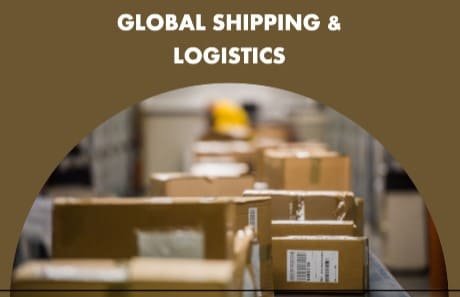Gone are the days when one has to struggle to find customers overseas and has to spend plenty of time as well as money.
Any seller who wants to expand their business overseas must know How to Reach Customers Worldwide Through Online Marketplaces? Because of easy accessibility & support at the initial stage of startup journey.
Benefits of Selling on International Ecommerce Platforms
- Strong Customer Base which is very crucial if you are expanding overseas
- Automatic localization of your product content as well as checkout process
- Simplify the payment process by offering the multiple mode of payment options
- Takes care of the customer support which is the backbone of any business
- Helpful tools to manage Inventory | Analyze progress and Automate Marketing
- Offer guidance in shipping & logistics along with Regulations of the specific region
Why Global Marketplace are the good way to Start?

Creating a standalone e-commerce website requires substantial investment in building trust, attracting traffic, and managing logistics, which can be challenging for businesses without prior experience in international markets.
Whereas, the global marketplace landscape has evolved significantly over the past decade, with platforms like Amazon and eBay leading the charge in providing businesses with unparalleled access to a worldwide audience.
Infrastructure
These online marketplaces have become essential for reaching international customers, offering a robust infrastructure that simplifies the process of global trade.
From payment processing to shipping logistics, platforms like Amazon and eBay offer comprehensive solutions that simplify the complexities of international trade.
- Amazon, with its extensive logistics network and localized marketplaces, operates in numerous countries, allowing sellers to tap into diverse markets.
- eBay’s auction-style listings and fixed-price formats cater to a broad spectrum of buyers, making it a versatile platform for global commerce.
This allows businesses to focus on their core operations while leveraging the marketplace’s resources to handle the intricacies of global commerce.
Customer Base
The importance of these marketplaces is underscored by impressive statistics.
- Amazon reported over 200 million Prime members globally as of 2021, highlighting its vast and loyal customer base.
- eBay, boasts over 182 million active buyers worldwide, showcasing its significant reach and engagement.
These figures illustrate the immense potential for businesses to expand their customer base through these platforms.
Advantage of Online Marketplaces
- One of the primary advantages of using established marketplaces such as Amazon and eBay is the built-in customer trust.
- These platforms have spent years building their reputations, ensuring secure transactions, and providing reliable customer service.
- This trust translates into higher conversion rates for sellers, as buyers are more likely to purchase from a known and reputable site.
- Extensive user base of these marketplaces means that businesses can reach millions of potential customers without the need for extensive marketing efforts.
Overall, understanding of the global marketplace landscape and leveraging platforms like Amazon and eBay can provide businesses with a strategic advantage in reaching customers worldwide with much less hassle.
Setting Up Seller Account on International Marketplace

When setting up your seller account on online marketplaces like Amazon and eBay for international sales, several crucial steps need to be meticulously followed to ensure a successful global reach.
Account Type
- First, you must choose the right account type. Both Amazon and eBay offer individual and professional seller accounts, each with its own fee structures and benefits.
- For international sales, it’s often advantageous to opt for a professional account due to the additional tools and analytics provided.
Fees
Understanding platform-specific fees for international transactions is the next step.
- Both Amazon and eBay charge various fees, including listing fees, final value fees, and international transaction fees.
- Familiarize yourself with these charges to avoid unexpected costs that could impact your profit margins.
- On Amazon, for instance, international sellers might encounter referral fees, which vary depending on the product category and the country of sale.
Optimize Listings
Optimizing product listings for a global audience is essential for attracting international customers. Start by translating your product descriptions accurately into the languages of your target markets. Using appropriate keywords in these translations will improve your product’s visibility in search results.
Product Pricing
Set competitive prices by considering the purchasing power and market conditions in different regions. Use tools provided by the platforms to adjust prices automatically based on currency fluctuations and shipping costs.
Return
Ensure your customer service is geared towards international buyers. This might include offering multi-lingual support and flexible return policies that cater to international customers.
Shipping & Logistics

When aiming to reach customers worldwide through online marketplaces like Amazon and eBay, an efficient logistics and shipping strategy is crucial. Both platforms offer various shipping options designed to simplify the process of international shipping for sellers.
Fulfillment by Amazon (FBA)
Fulfillment by Amazon (FBA) is one of the most popular options for sellers looking to expand their global reach.
- By using FBA, sellers can store their products in Amazon’s fulfillment centers, and Amazon takes care of the packing, shipping, and customer service on behalf of the seller.
- This ensures timely delivery but also leverages Amazon’s robust logistics network to minimize shipping costs and improve customer satisfaction.
- Products listed with FBA are often eligible for Amazon Prime, which can significantly boost visibility and sales.
eBay’s Global Shipping Program
eBay offers the Global Shipping Program (GSP) to facilitate international sales.
- When a seller opts into GSP, they only need to send their items to eBay’s domestic shipping center. From there, eBay handles the international shipping, including customs processing and import/export regulations.
- This program simplifies the complexities of international shipping and helps avoid unforeseen delays and additional costs, making it easier for sellers to reach a global audience.
Choosing Reliable Shipping Carriers
Another critical component of a global logistics strategy is selecting reliable shipping carriers.
- Sellers must research and choose carriers that offer dependable service, competitive rates, and efficient delivery times.
- Carriers like DHL, FedEx, and UPS are renowned for their global reach and reliability.
- Comparing their services and transit times can help sellers determine the best option for their specific needs.
Managing Shipping Costs
Effective cost management is essential when shipping internationally. Sellers should consider using shipping calculators provided by carriers to estimate costs accurately. Additionally, leveraging shipping discounts offered by online marketplaces or partnering with fulfillment services can lead to significant savings. Efficient packaging that minimizes weight and volume can also reduce shipping expenses.
Compliance, Customs and Regulations

Understanding customs and import/export regulations is vital to avoid delays and additional costs. Compliance with international trade regulations is paramount.
- Sellers should familiarize themselves with the regulations of the destination countries, including required documentation and potential tariffs.
- Properly declaring items and ensuring compliance with international trade laws can prevent complications, ensuring a smooth delivery process for customers worldwide.
- Ensure that your products meet the import and export regulations of the countries you are selling to. This includes understanding customs duties, taxes, and any required certifications or labels.
- Non-compliance can lead to penalties or your products being held at customs, which can severely disrupt your sales
Marketing and Customer Service for International Customers

Effectively marketing products and providing exceptional customer service to international buyers necessitates a strategic approach that prioritizes cultural sensitivity and localization.
When expanding into global markets through online marketplaces such as Amazon and eBay, it is essential to tailor promotional materials and communication styles to resonate with diverse regional audiences.
This involves more than just translating text, it requires an understanding of local customs, preferences, and cultural nuances that can significantly influence purchasing decisions.
Localization
Localization should extend to every aspect of your marketing strategy.
- Customize product descriptions, images, and advertisements to align with regional norms and expectations.
- Certain colors, symbols, or phrases might carry different connotations in different cultures.
- Conducting thorough market research and employing native speakers can help ensure that your marketing campaigns are both appropriate and effective.
Customer service
Customer service is another critical area where cultural sensitivity plays a pivotal role.
- Providing support across various time zones can be challenging, but it is crucial for maintaining high customer satisfaction.
- Utilizing platform tools like automated responses and chatbots can help manage inquiries efficiently, while offering multilingual support can bridge language barriers and enhance the customer experience.
- Establish clear communication channels and set realistic expectations for response times to manage customer expectations.
Ratings
Maintaining high seller ratings is vital for building trust with international customers.
- Consistently delivering quality products, adhering to shipping deadlines, and promptly addressing any issues that arise.
- Encouraging satisfied customers to leave positive reviews can further bolster your reputation and attract new buyers.
Overall, by prioritizing these elements, sellers can effectively engage international audiences and foster long-term customer loyalty.
Helpful resource
Expanding Your Business | International Ecommerce Strategy
Notes
1) The combination of built-in trust, extensive user bases, and robust infrastructure makes these marketplaces an attractive option for businesses looking to expand their international presence.
2) By setting up your seller account thoughtfully and strategically, you can effectively expand your business’s reach to global marketplaces, tapping into new customer bases and increasing your overall sales potential.
3) Reaching customers worldwide through online marketplaces requires a well-rounded approach that combines localized marketing strategies with culturally sensitive customer service practices.
4) By building a partnership with international suppliers and retailers of your niche will keep you updated with the latest trends.
5) Make sure to create a brand with the help of these marketplaces and drive customers towards your websites because then only you would be able to build a business for the long run.

Before starting Ask Yourself
- Is this the right marketplace for my products? It doesn’t matter if its not Amazon or eBay.
- Overall cost needed to setup on specific international marketplace? And what are the services i will get?
- Do i need help from third party companies to make the best out of this marketplace?
- Overall cost of marketing & advertising on the platform?
- Cost to maintain the business for a period of time?
- If someone is selling similar product then what would be my USP?
GET IN TOUCH